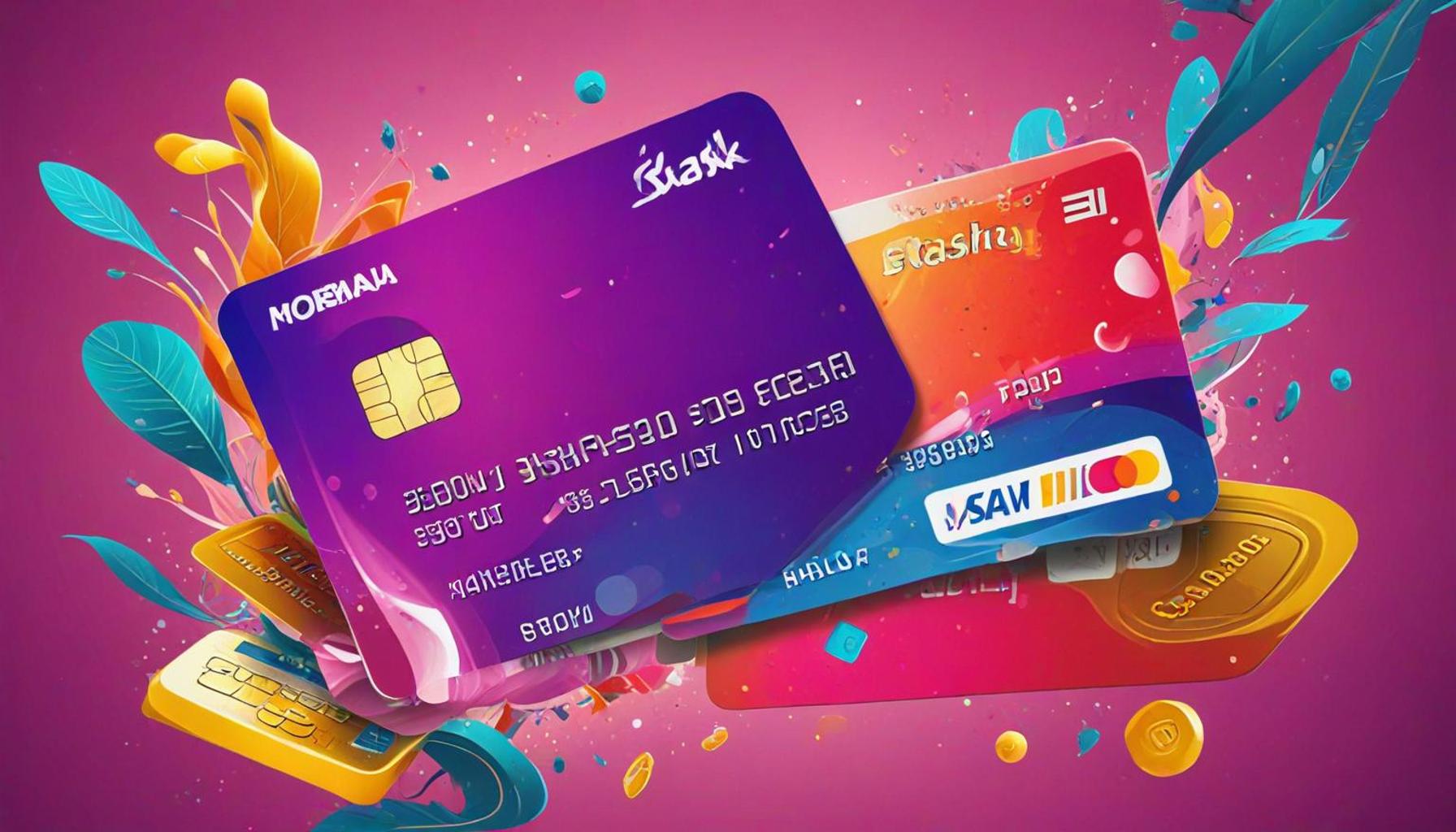How to choose the best cashback credit card for daily use

Understanding Cashback Credit Cards
When it comes to maximizing the value you get from everyday purchases in New Zealand, selecting the right cashback credit card can be a game changer. These cards allow you to earn a percentage of your spending back as cash rewards, turning necessary expenses into opportunities for savings. Since there’s a wide range of credit cards available, it’s important to understand how to match their features with your personal spending patterns for the best rewards.
Key Factors to Consider
To make the most of your cashback credit card experience, here are some important features to evaluate:
- Percentage of cashback: Different credit cards offer various cashback percentages on different categories of spending. For instance, some cards may provide up to 5% cashback on groceries or dining, while others might only offer 1% on all purchases. If you frequent cafes or supermarkets, a card that maximizes rewards in these areas can add up significantly over time.
- Annual fees: While some cashback cards have no annual fees, others charge a fee that can offset your earnings. It’s crucial to calculate your estimated annual cashback versus any fees. For example, if a card charges a $100 annual fee, but you only earn $80 in cashback, it may not be worth it.
- Bonus offers: Many credit cards include initial promotions that can substantially boost your cashback earnings. For instance, some cards offer 2-3 times the cashback on all purchases during the first three months or once you reach a spending threshold. This can be advantageous if you have planned purchases coming up, such as that new electronic device or holiday expenses.
- Redemption options: Different cards provide various ways to redeem your cashback. Some allow you to apply the cashback directly to your credit card bill, while others might offer the option to transfer it to a bank account or convert it into gift cards. Understanding these options helps ensure that you can easily access your rewards when needed.
- Foreign transaction fees: If you travel abroad frequently, it’s wise to choose a card with low or no foreign transaction fees. Certain cards may charge up to 3% for international purchases, which can negate any cashback benefits if you are not careful.
Conclusion
By closely examining these factors, you can locate a cashback credit card that amplifies your daily spending rewards without over-complicating your finances. Assessing how you spend, evaluating potential fees, and exploring the redemption process will empower you to choose a credit card that seamlessly fits into your lifestyle, making your financial journey more rewarding. Remember, the ideal card is one that not only aligns with your spending habits but also enhances your overall financial health.
CHECK OUT: Click here to explore more
Choosing the Right Cashback Credit Card for Your Spending Habits
To select the best cashback credit card for your daily use, it is essential to align the card’s features with your spending tendencies. Understanding your monthly expenses can dramatically affect your cashback earnings. Consider the following steps to help identify the ideal card that fits your lifestyle:
1. Analyze Your Spending Patterns
The first step in choosing a cashback credit card is to track where you are spending your money. By analysing your monthly budget or reviewing bank statements, you can determine which categories dominate your expenses. Most individuals have everyday expenses that fall into common categories such as:
- Groceries: If you find yourself frequently shopping for food and household items, look for cards that offer higher cashback rates in this category.
- Dining Out: Dining expenses can add up quickly, making a card with enhanced rewards for eating out highly beneficial.
- Fuel: For those who commute regularly, choosing a card that rewards petrol purchases can lead to significant savings.
- Utilities: Some cards provide cashback on utility bills. If you pay your power and phone bills with your card, this could also contribute to your cashback earnings.
2. Compare Cashback Structures
Cashback credit cards often feature varying reward structures, and understanding these will assist you in maximizing your rewards. Look for cards that offer:
- Tiered Cashback Rates: These cards provide different cashback percentages based on spending categories. For example, you may earn 2% on groceries and 1% on everything else.
- Flat Rate Cashback: Some cards offer a consistent rate, such as 1.5% cashback on all purchases. This type can work well if you desire simplicity and have a diverse spending pattern.
- Bonus Categories: Certain cards allow you to activate specific spending categories each quarter for increased cashback. If you’re willing to monitor and adapt to these categories, they can lead to enhanced rewards.
3. Assess Your Personal Financial Goals
Beyond cashback percentages and reward structures, consider your broader financial goals. If you aim to lower your overall financial costs, choosing a card with no or low annual fees is advisable. For instance, a card offering 5% cashback on groceries may not be worthwhile if it comes with a hefty yearly fee.
Additionally, if you are planning significant expenses such as travel or home renovations, check for promotional bonuses that can boost your rewards during your first few months. These initial offers can often yield substantial returns, especially if timed with your spending plans.
By thoroughly assessing your spending habits and comparing card features, you will be well on your way to identifying the cashback credit card that can best enhance your daily financial activities. Remember, the goal is to find a balance between earning rewards and maintaining a card that aligns with your lifestyle and financial objectives.
SEE ALSO: Click here to read another article
Understanding Additional Features and Limitations
When selecting a cashback credit card, it is important not only to evaluate the cashback potential but also to consider additional features, restrictions, and potential limitations of the card. Before making a decision, examine the following aspects:
1. Redemption Options
One critical factor to consider when choosing a cashback credit card is how you can redeem your cashback rewards. Different cards may offer various redemption methods, such as:
- Statement Credits: Some cards allow you to apply your cashback directly toward your credit card balance, reducing the amount you owe.
- Gift Cards: Several cards offer cashback redemption for gift cards, often providing coupons or discounts for popular retailers.
- Bank Transfers: If you prefer cash, look for cards that let you transfer your cashback directly into your bank account.
Understanding your redemption options and ensuring that they align with your preferences can enhance your overall experience with the card.
2. Sign-Up Bonuses and Promotions
Many cashback credit cards offer attractive sign-up bonuses to entice new customers. These can significantly increase your cashback earnings right from the start. For example, you might see offers such as earning NZD 100 back if you spend a minimum amount within the first three months. To make the most of these offers, ensure you are aware of any spending thresholds and whether your planned purchases will allow you to meet these requirements.
Evaluate the timing of these promotions; if you have larger purchases coming up—such as holiday shopping—it may be beneficial to apply for a card that offers a lucrative sign-up bonus during that time.
3. Interest Rates and Fees
While cashback rewards are appealing, it’s crucial to be aware of the card’s interest rates and fees, as these can negate any rewards you may earn. Look for the following:
- Annual Fees: Some cards charge yearly fees, which can diminish your net rewards. Choose cards with reasonable fees relative to the cashback you expect to earn.
- APR for Purchases: If you plan to carry a balance month-to-month, the interest you’ll pay can outstrip your cashback rewards. Ideally, you should aim for a card with a low annual percentage rate (APR).
Always calculate the potential costs and weigh them against the potential benefits to find a card that adds value rather than detracts from your finances.
4. Customer Support and Additional Benefits
Lastly, assess the level of customer service and how the card issuer assists you with daily transactions. Look out for features like:
- Fraud Protection: Ensure that the card offers robust fraud protection services to safeguard your financial information.
- Travel Insurance: Some cashback cards provide additional advantages like travel insurance or rental car coverage, which can be very useful if you travel frequently.
Moreover, being able to reach customer support easily for any queries or issues should be a part of your considerations when selecting a card. A responsive card issuer can create a more positive experience, especially when navigating potential problems.
By keeping these additional features and limitations in mind, you can make a more informed decision that will maximize your cashback benefits while ensuring that you are not caught off guard by unexpected costs or challenges.
SEE ALSO: Click here to read another article
Conclusion
Choosing the best cashback credit card for daily use involves a careful assessment of various factors that align with your lifestyle and spending habits. As we discussed, it’s essential to evaluate the cashback rates offered for different categories—such as groceries or fuel—so you can maximize rewards on your everyday purchases. Pay attention to the redemption methods available, ensuring they fit your preferences, whether you prefer statement credits, gift cards, or cash transfers. The significance of sign-up bonuses and promotional offers cannot be overstated, as they can provide a substantial initial boost to your cashback earnings.
Furthermore, understanding interest rates and fees is crucial. Opt for a card that minimizes costs while still offering compelling rewards. Lastly, prioritize customer support and additional benefits, such as fraud protection and travel insurance, which can enhance your overall experience and peace of mind.
By integrating these insights into your decision-making process, you can select a cashback credit card that not only rewards you effectively but also complements your financial management. Remember, the right card should enhance your spending power without burdening you with unexpected, hidden costs. With thoughtful evaluation, you’ll find a cashback credit card that works best for your daily needs, maximizing both convenience and financial returns.
Related posts:
How to Use the Envelope Technique in Monthly Financial Planning
Common mistakes when applying for credit cards and how to avoid them
How to Take Advantage of Points Program Benefits in Financial Services
The role of mindset in achieving ambitious financial goals
Annual financial planning: how to create a solid month-by-month plan
Long-term strategies for consistently building wealth

Linda Carter is a writer and financial expert specializing in personal finance and financial planning. With extensive experience helping individuals achieve financial stability and make informed decisions, Linda shares her knowledge on the our platform. Her goal is to empower readers with practical advice and strategies for financial success.